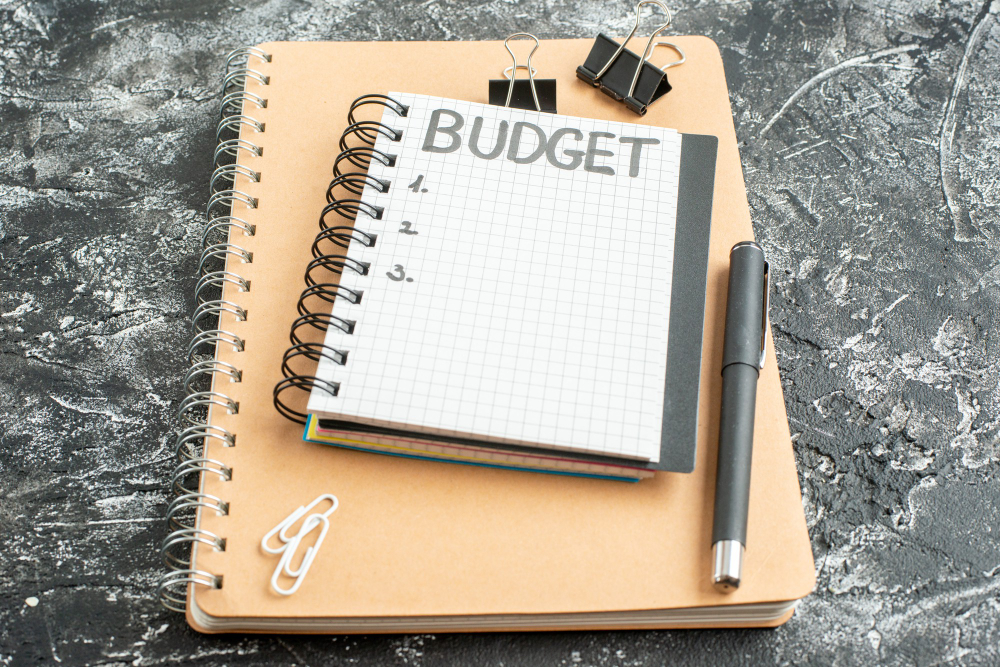Creating a budget is fundamental to understanding your financial situation and working towards your financial goals. It’s a tool that helps you track your income and expenses, enabling you to make informed decisions about your money. Whether you’re aiming to save for a big purchase, pay down debt, or gain control over your finances, follow these steps to create a budget that fits your lifestyle and goals:
1. Determine Your Income
Understanding your income is the first and most crucial step in creating a budget. This step is straightforward if your income is consistent, such as a monthly salary. However, if your income varies, like being paid weekly or irregularly as a freelancer, calculate your average income over the past three to six months. Focus on your take-home pay, as this is the amount you have available for budgeting.
2. Calculate Your Monthly Expenses
Next, assess your monthly expenses. Review your bank and credit card statements from the past three to six months to identify your typical spending patterns. Categorize your expenses into necessities and discretionary spending:
- Necessities: Create categories for recurring monthly expenses like rent or mortgage, utilities, insurance, groceries, and transportation. Also, consider non-monthly expenses such as insurance premiums, car registration renewals, and tax bills.
- Discretionary Spending: Break down discretionary spending into specific categories like dining out, entertainment, and shopping. Detailed categories provide clarity on where your money is going.
Maintain a balance between comprehensive expense categories and practicality. The more detailed your categories, the clearer your budget will be, but it can become complex to track every expenditure. Find a balance that suits your needs.
3. Set Realistic Goals
Once you understand your spending habits, set financial goals based on your budget. To pay down debt or increase savings, set specific monthly targets for these goals. To achieve them, identify categories where you can cut back spending to allocate more funds toward your objectives. Ensure your goals are SMART: Specific, Measurable, Achievable, Realistic, and Time-bound.
4. Track Your Spending
Creating a budget is only effective if you consistently track your spending. Monitoring your income and expenses allows you to stay within your budgetary limits and make adjustments as necessary. Budgeting software like Mint or You Need a Budget can simplify this process by automatically importing your financial transactions, categorizing them, and providing a clear overview of your financial situation.
Regularly tracking your spending helps validate your budget assumptions and enables you to make necessary adjustments for future months.
5. Choose a Budgeting Plan
There are various budgeting methods to consider, each with its approach. Select the one that aligns with your financial management style:
- Envelope System: Allocate cash for specific spending categories and place it in envelopes. When an envelope is empty, you’ve reached your spending limit for that category until the next budgeting period.
- 50/30/20 Plan: Allocate 50% of your income to necessities, 30% to discretionary spending, and 20% to financial priorities like savings and debt repayment. Adjust these proportions according to your needs and goals.
- Two-account Plan: Divide your income into two accounts—one for fixed expenses and the other for discretionary spending. This approach ensures your essential expenses are always covered while limiting discretionary spending.
- Zero-Based Budgeting: Assign every dollar of your income to a specific purpose, making your expenses match your income exactly. This method provides a detailed view of your finances but requires meticulous tracking.
6. Stick to Your Budget
Consistently adhering to your budget is essential for achieving financial success. To stay on track:
- Be realistic: Set achievable goals to maintain motivation, especially when starting.
- Plan: Include savings for non-monthly expenses and unexpected emergencies in your budget.
- Be flexible: Allow room for adjustments as your financial situation changes.
- Pivot when needed: Modify your budgeting approach if it no longer suits your goals or circumstances.
- Use credit cards responsibly: If you use them, ensure you stay within your budget, keeping balances low and paying them off in full each month to avoid accumulating debt.
In conclusion, creating and maintaining a budget is a powerful tool for controlling your finances and achieving your goals. By understanding your income, categorizing expenses, setting realistic goals, tracking spending, and selecting a budgeting plan that suits your style, you can take charge of your financial future and make informed financial decisions. Remember that a budget is a dynamic tool that can be adjusted as your life and goals evolve.
Frequently Asked Questions
1. Why should I create a budget?
- A budget helps you understand your financial situation, track your income and expenses, and make informed decisions about your money. It’s a crucial tool for achieving financial goals, managing debt, and building savings.
2. How often should I review and update my budget?
- Reviewing your budget regularly is advisable, ideally at the end of each month. This allows you to assess your spending, track progress toward your goals, and make necessary adjustments.
3. What are fixed and variable expenses?
- Fixed expenses are regular, recurring, stable costs, such as rent or mortgage payments, utilities, and insurance premiums. Variable expenses are flexible and can fluctuate monthly, like dining out, entertainment, and groceries.
4. How can I reduce discretionary spending in my budget?
- Consider setting limits or allowances for categories like dining out and entertainment to reduce discretionary spending. Look for opportunities to cut back, such as cooking at home instead of eating out or finding free or low-cost entertainment options.
5. What should I do if my expenses exceed my income in my budget?
- If your expenses exceed your income, it’s crucial to identify areas where you can cut back. Consider reducing discretionary spending, renegotiating fixed expenses, or finding ways to increase your income through additional work or side gigs.
